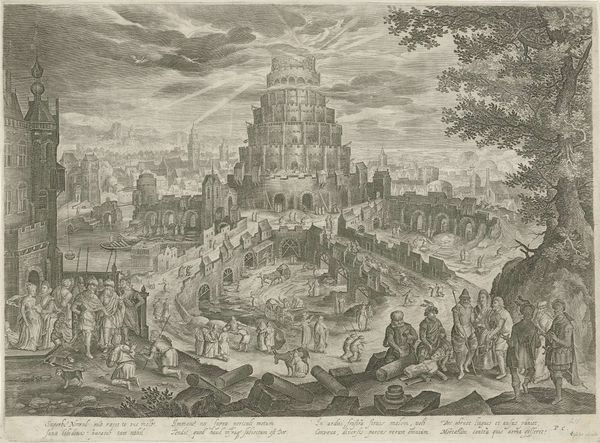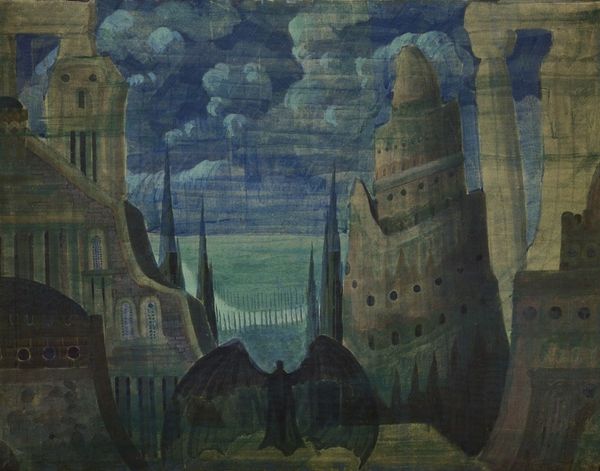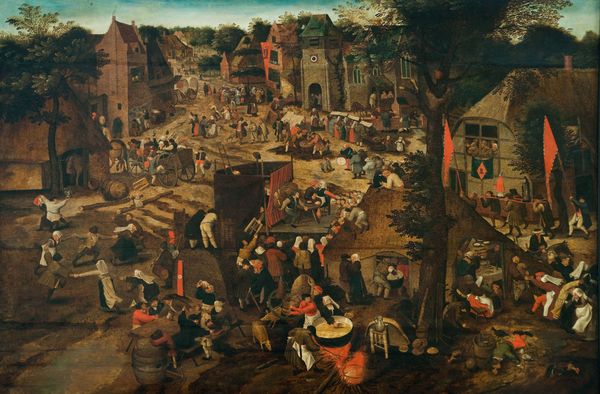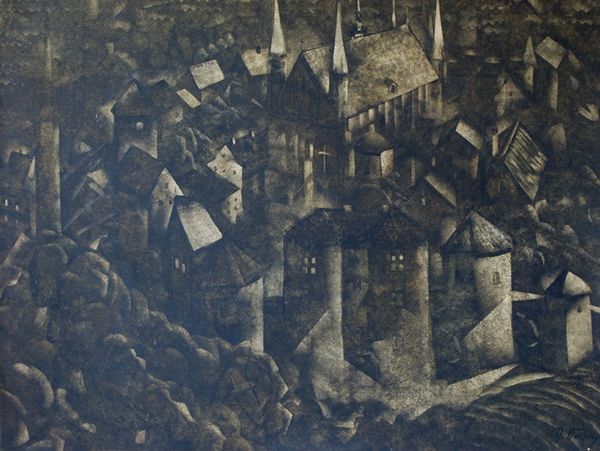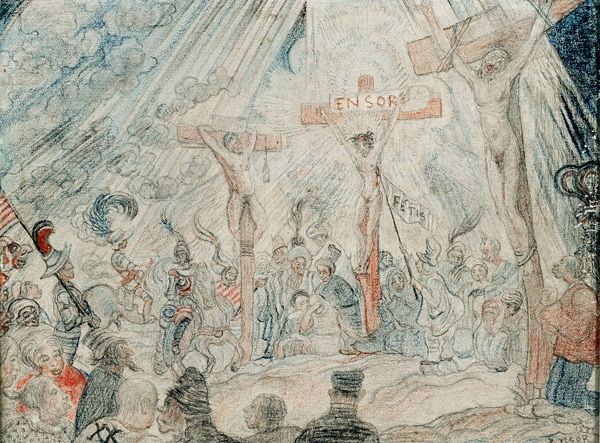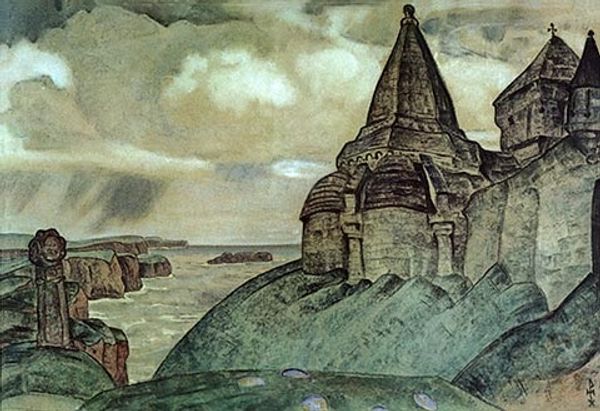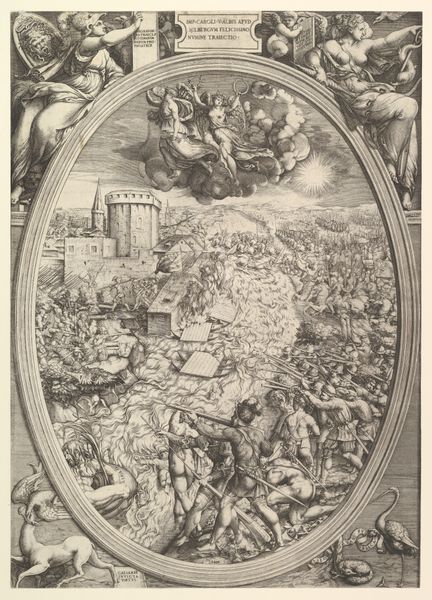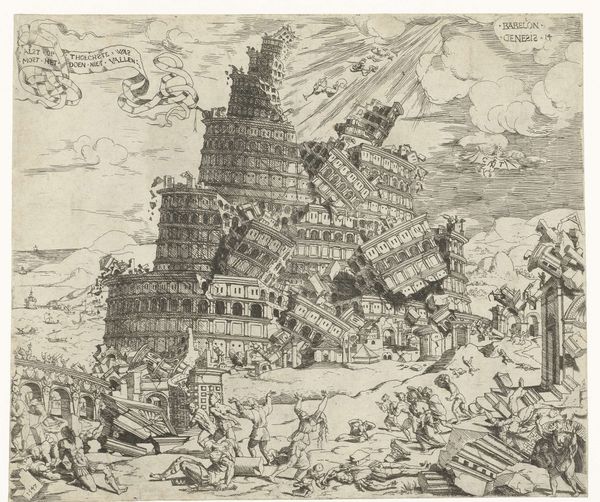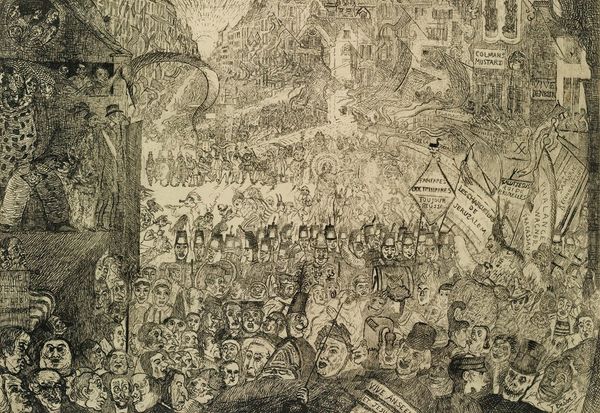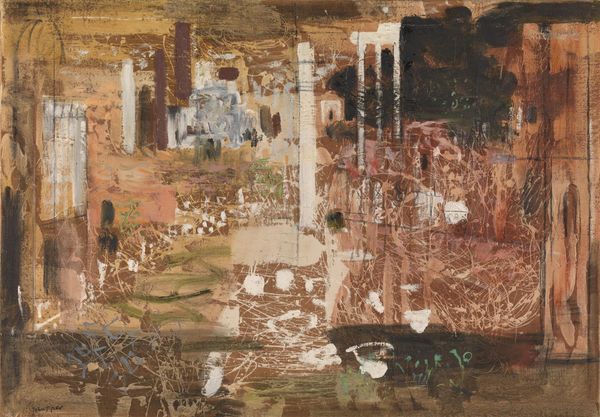
painting, oil-paint
#
narrative-art
#
painting
#
oil-paint
#
landscape
#
mannerism
#
oil painting
#
history-painting
Dimensions: 42.9 x 43.2 cm
Copyright: Public domain
Editor: Here we have *The Tower of Babel (after Pieter Bruegel the Elder)* by Pieter Brueghel the Younger, an oil painting depicting that famous biblical story. It's immediately striking how imposing the tower is, but it also feels... chaotic. What strikes you most about it? Curator: For me, it’s the commentary on human ambition. Brueghel is using a biblical narrative to reflect on the socio-political climate of his time, perhaps critiquing the hubris of rulers or even the grand projects of the Church. How do public works and institutions reflect power in our own society? Editor: I see that. The tower's unfinished state reinforces that message. The construction seems to be faltering. Curator: Precisely. And look at the incredible detail - all the tiny figures swarming around the base. It becomes a stage for human activity, ambition, and ultimately, failure. Is it a cautionary tale? Or simply a reflection on human nature? Editor: It feels both cautionary and maybe a little… cynical? Like, humans are doomed to overreach. Curator: Possibly. Remember the context. This was a period of religious and political upheaval. Artists often used biblical stories to comment on contemporary issues under the guise of religious art. Do you think its message changes depending on the viewer's background? Editor: That's a great point! If you already felt critical of institutions, it probably just confirms it. Otherwise, you might see it as just a moral story about not being prideful. I’ll definitely think more about the political layer next time I see a piece like this. Thanks! Curator: And I'm reminded of the ever-shifting public reception to works of art. It evolves with our society. A powerful piece for thought.
Comments
No comments
Be the first to comment and join the conversation on the ultimate creative platform.
